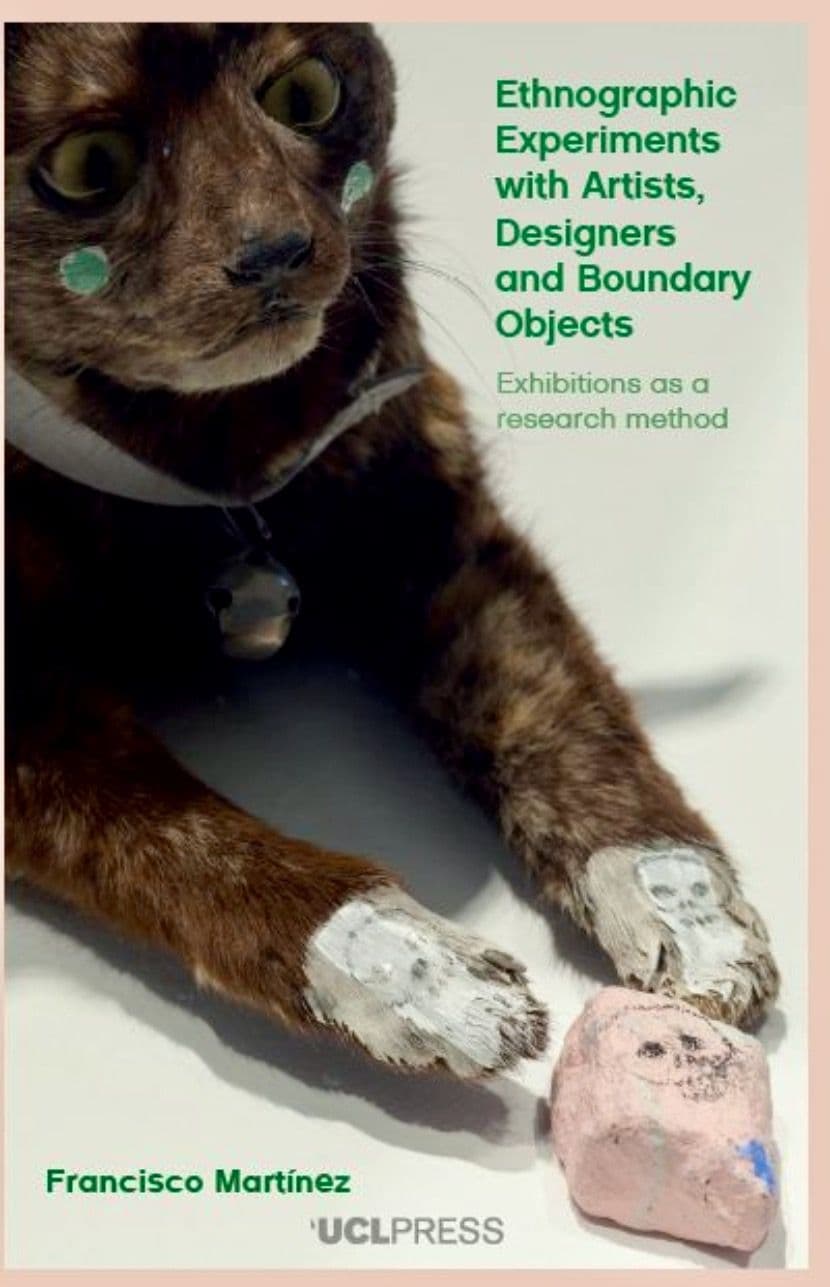
Ethnographic Experiments with Artists, Designers and Boundary Objects
UCL Press 2021
What would an exhibition that asks ethnographic questions rather than presenting fixed categories look like? This book describes how to organize exhibitions as ethnographic devices: not only as attempts to communicate research results, but as techniques for inventing, re-designing and critically questioning a social reality. This way of investigating contributes to distribute the analytical capacity among the different actors involved in the exhibition, as well as making the public participants in our re-presentations of reality.
The book opens up a vast field of methodological explorations, providing a repertoire to reconsider ethnography and objecthood while producing knowledge with people of different backgrounds. It invites the reader to reflect on the skills of collaboration and experimentation in fieldwork and in gallery curation, thereby expanding the possibilities for transdisciplinary collaborations, the opportunity to use exhibitions as research devices, and the role of experimentation in the exhibition process.
Praise
With great verve, this wonderfully enjoyable book takes a fresh, insightful look at creative collaborations between anthropologists, artists and designers. It explores how these kinds of partnerships take shape and dynamically generate new knowledge. The book includes an important and fascinating examination of the potential of the exhibition as methodological device. It will be invaluable reading for anyone interested in museums, art, anthropology and their innovative intersections.
Sandra Dudley, University of Leicester
Martínez has put together no less than a must-read treatise on ‘collaboratology’ where art spaces joyfully turn into a laboratory to experiment with the manifold contours anthropological practice might take. In the situations here recounted, epistemic generosity becomes a guiding research principle. One enabling anthropologists to relearn their craft from curators, inviting designers and artists to act as epistemic partners, and turning objects into springboards of stories and further relations. This book is a marvellous tour-de-force that will surely inspire readers to reconsider fieldwork as a ‘curated’ entity, unfolding in unexpected ways as part experimenting with a wide variety of devices.
Tomás S. Criado, Humboldt University in Berlin
With Ethnographic Experiments, Martínez has curated scenarios for novel ethnographic relations. His approach to anthropology is capacious and creative, inviting future experiments for doing research differently. His writing easily moves across disciplinary boundaries, generously inviting readers into creative thought and sense processes. More than a meditation on boundary objects, his book is itself one. It transforms academia’s analytical intensities into thought-felt matters of concern.
Jason Pine, State University of New York
Kuraator Francisco Martineze üldisem põhieesmärk oli võtta maha pingeid kunstivälja ja ülejäänud kultuuri vahel – see ülesanne on eesti kultuuris endiselt oluline ja õnnestus eriti hästi eespool mainitud seminari ajal, kui maja oli uudistajaid/mõtestajaid täis.
Hanno Soans, Postimees
В целом можно сказать, что книга сама по себе является экспериментом и поэтому допускает немало шероховатостей и незавершенных линий. Тем не менее она будет безусловно интересна и полезна всем, кто интересуется опытом кураторства, этнографией трансдисциплинарного сотрудничества, экспериментальными партиципаторными практиками и работой с художниками и дизайнерами.jaid täis.
Зинаида С. Васильева, Антропологический форум
